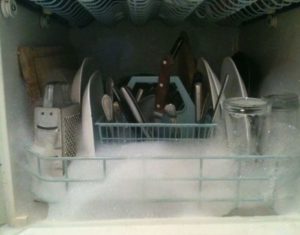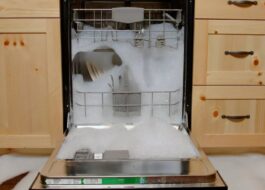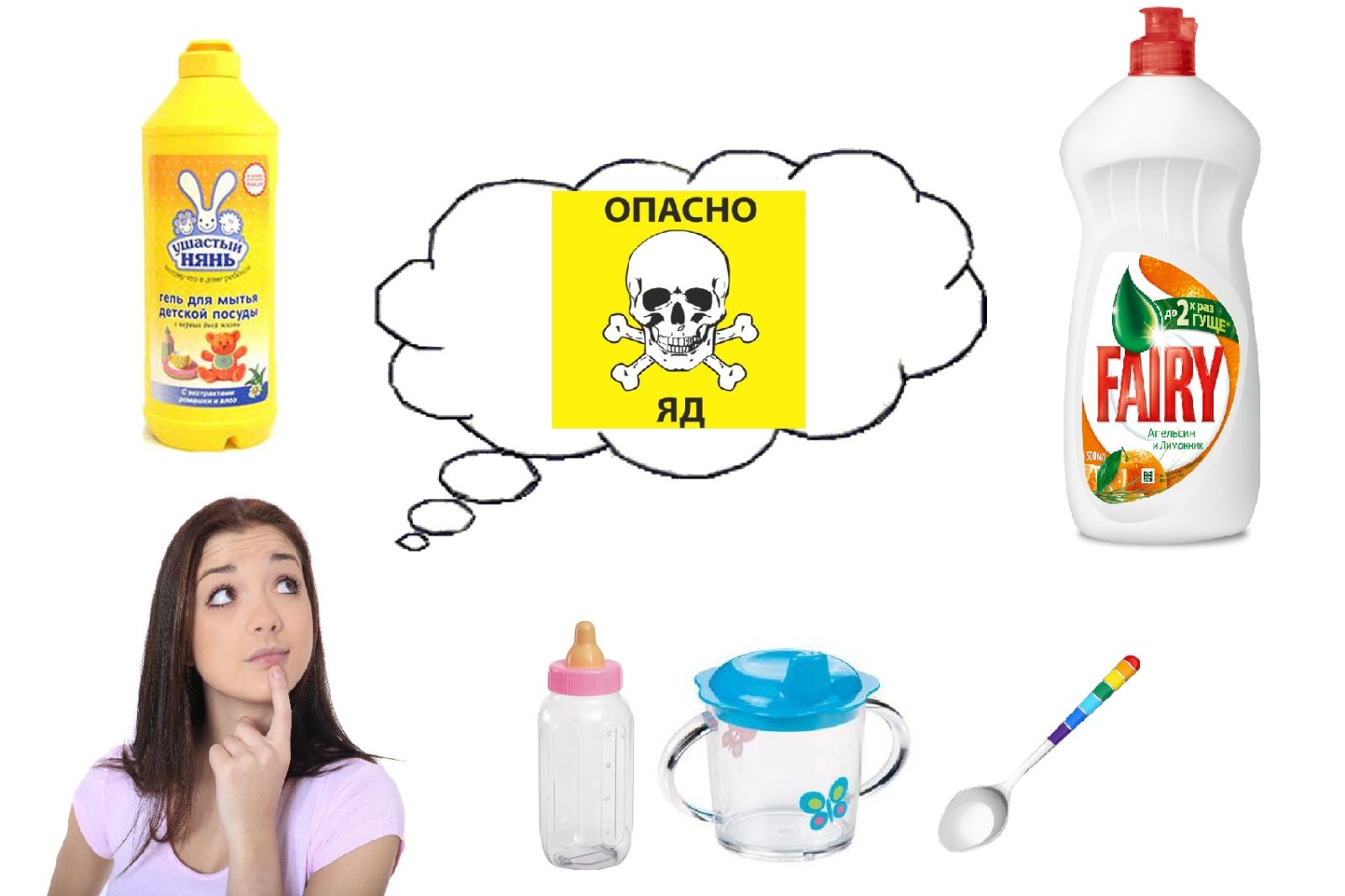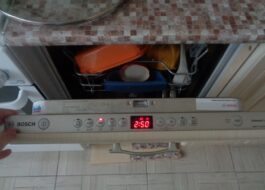Why is there foam left in the dishwasher?
 Let's imagine that every time there is foam left in the dishwasher after washing dishes. The number of dishes does not matter; even if you make a half load, foam is still present at the bottom of the washing chamber. To sound or not to sound the alarm? This will depend on the amount of foam. If there is very little foam, just a few shreds, do not pay attention, this is normal. But if the foam hides the sprinkler located below and tries to get out of the washing chamber, you need to find out the cause of the problem. We, according to established tradition, will help you.
Let's imagine that every time there is foam left in the dishwasher after washing dishes. The number of dishes does not matter; even if you make a half load, foam is still present at the bottom of the washing chamber. To sound or not to sound the alarm? This will depend on the amount of foam. If there is very little foam, just a few shreds, do not pay attention, this is normal. But if the foam hides the sprinkler located below and tries to get out of the washing chamber, you need to find out the cause of the problem. We, according to established tradition, will help you.
What did you wash the dishes with?
Is there a lot of foam at the bottom of the dishwasher? Check the quality of the detergent you are using. Often, unscrupulous manufacturers of cheap products add elements to the composition that cause increased foaming. You can easily check this. Buy some trial ones dishwasher tablets and see how your “home assistant” will work with them. If foam still forms, the problem is not with the detergent.
Some dishwasher owners manage to add mustard, washing powder, citric acid, vinegar, soda, etc. to the dishwasher instead of a good factory product. Some are convinced that any, even the best tablet, will be replaced by Fairy dishwashing gel, which they safely pour into the dishwasher. Then they are the first to shout that the dishwasher is bad, that it spits foam.
Friends, remember that PMM manufacturers write detailed instructions for household appliances for a reason. The provisions of these instructions must be followed, and then everything will be fine.
Since “bad detergent” is the main cause of the problem that most often occurs among users, let’s check it wisely. What should be done?
- After washing the dishes, when you notice increased foaming, remove the clean dishes from the baskets and carefully remove the foam from the bottom of the washing chamber with a cloth.
- Check the detergent container to see if there is something left in there. With the right “scheme,” there should be very little left or nothing at all left.
- Place a full dose of new detergent into the container and, without loading any dishes, run the dishwasher again.
- Wait for the end of the program, and then see the results. If foam still forms, then the problem is not in the product, but if there is no foam, then you understand.
What was the dishwasher contaminated with?
Some users note that increased foaming occurs from time to time. Why does it happen? Bosch dishwashers, and any other dishwashers, wash any dirt well, that’s how they are designed. But some food residues can react with detergent components and form a large amount of foam during the breakdown process. This is how, for example, egg whites, leftover milk porridge, and leftover dough behave. But be careful here, huge foam caps from products usually do not form, so if there is a lot of foam, the reason is different.
To understand whether food debris is causing increased foaming, smell the remaining foam. Food-grade foam smells bad, while detergent foam has a vague chemical odor.
Incorrect settings
If your dishwasher is leaking foam even though you are using a good detergent and washing plates that contain regular food, it may be because the dishwasher itself is not set correctly. This usually happens when machine owners used powder for a long time and then switched to tablets. In this case, the tablet begins to dissolve unevenly, including when rinsing, when the product is no longer needed at all.
It turns out that the washing program is already ending, but the tablet continues to dissolve, and the foam, draining from the dishes, collects at the bottom of the washing chamber. What to do? You need to take and carefully read the instructions for the dishwasher. It probably describes how you can change the settings of your device so that it starts working correctly with tablets.
Some PMMs do not support the use of pills and behave unpredictably with them.
The filter mesh is clogged
Another common cause of increased foaming is a blockage, but not a simple blockage, but a superficial one. What does it mean? If you wash very greasy dishes with pieces of fat hanging on them, there is a risk that this fat will clog the mesh of the garbage filter located at the very bottom of the washing chamber. A film of fat will close the micro-holes of the mesh and water mixed with detergent will have difficulty passing through the garbage filter.
The result may be a head of foam near the lower sprinkler. To remove the cause of the problem, you need to rinse the bottom of the washing chamber. The water will drain normally and foam will not form in excess.
So, we have considered the main causes of the described problem. If you have any questions, please ask them on our forum or write comments.We will respond to them with great pleasure. Good luck!
Interesting:
3 reader comments
Add a comment Cancel reply
Categories
Washing machine repair


For buyers

For users

Dishwasher


















There are 3 reasons:
1. Incorrect position of the hose.
2. Clogged inlet pipe.
3. Poor pressure.
Thank you
Hello. The dishwasher has been standing for a long time, and now there is constant foaming, and in the absence of detergents. I washed everything 50 times and there was always foam, sometimes less, sometimes more.